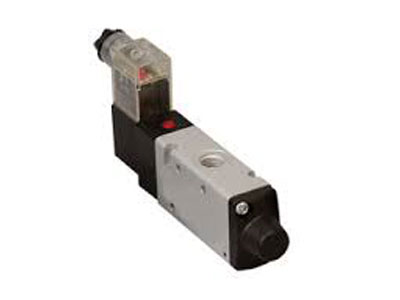Key Takeaway
The maximum pressure for a pressure relief valve (PRV) is determined by the system’s maximum allowable working pressure (MAWP) and the PRV’s set pressure. The PRV must be set to open at a pressure slightly below the MAWP to ensure prompt activation and reliable protection.
Accurate determination of the maximum pressure is essential for ensuring the PRV provides reliable protection and complies with industry standards. It helps prevent overpressure conditions and ensures the safe operation of equipment and systems.
Understanding Maximum Pressure Ratings
Maximum pressure ratings define the highest pressure a valve can safely handle. These ratings are critical for ensuring system safety and preventing equipment damage.
Determining maximum pressure ratings involves considering system requirements, material properties, and safety margins. Accurate ratings ensure reliable valve performance under all conditions.
Regular testing and verification of pressure ratings are essential for maintaining system safety. This includes periodic inspections and recalibration to ensure compliance with safety standards.

Factors Affecting Maximum Pressure
The maximum pressure a Pressure Relief Valve (PRV) can handle is influenced by several factors, ensuring that the valve functions correctly under varying conditions. One of the primary factors is the spring setting. The tension of the spring directly impacts the valve’s opening pressure. If the spring is set too high, the valve may not open when required, leading to overpressure, while if it’s too low, the valve may release pressure prematurely.
Media type is another crucial factor. Whether the system handles gas or liquid will affect how the PRV operates. Gas systems tend to have more pressure fluctuations, while liquids are more stable. The density and viscosity of the media also influence the valve’s ability to release pressure. Systems that use dense, high-viscosity fluids may require valves designed specifically to handle such pressures.
Environmental conditions, such as temperature, also play a significant role. High temperatures can weaken materials, making the PRV more susceptible to failure. For this reason, selecting a valve that is specifically designed for high-temperature applications is essential to prevent issues like valve seat distortion or leakage.
You May Like to Read
How to Determine Maximum Pressure for PRVs
Determining the maximum pressure for Pressure Relief Valves (PRVs) is essential to ensure that the system operates safely without exceeding the design limits of the equipment. The maximum pressure for a PRV, also known as the “set pressure” or “overpressure,” is determined by several factors, including the system’s operational requirements and the characteristics of the PRV itself.
The first step in determining the maximum pressure is to refer to the specifications provided by the PRV manufacturer. These specifications typically include the maximum allowable pressure the valve can handle, which is often based on the valve’s material, design, and intended application. For example, a spring-loaded PRV may have a maximum pressure limit based on the strength of its spring mechanism, while a pilot-operated PRV will be determined by the pilot system’s capacity to manage pressure changes.
Another critical factor is the operating pressure of the system in which the PRV is installed. The maximum pressure of the PRV should be chosen based on the normal operating range of the system, ensuring that the PRV opens only when the system pressure exceeds the set limit. It’s crucial to factor in any potential pressure surges or spikes that could occur due to system dynamics, as these can lead to unsafe conditions.
Ensuring Compliance with Standards
Pressure Relief Valves (PRVs) must meet stringent industry standards to ensure the safety, reliability, and performance of pressure management systems. Various regulatory bodies such as ASME (American Society of Mechanical Engineers), API (American Petroleum Institute), and PED (Pressure Equipment Directive) provide guidelines that PRVs must adhere to for safe operation. Compliance with these standards ensures that PRVs are capable of withstanding extreme conditions and reliably protecting equipment from overpressurization.
When installing PRVs, it’s essential to ensure that the valve is selected based on the specific pressure range and flow requirements of the system. This includes considering factors like temperature, system fluid characteristics, and valve sizing to meet the prescribed standards. Additionally, proper installation techniques, such as ensuring correct valve orientation and preventing blockages, are critical in maintaining compliance with safety regulations.
Routine inspection and testing are also essential for compliance. Regular maintenance schedules should be established to test the valves and confirm their performance in line with the set standards. Any modifications to the system or valve should also be evaluated against these standards to ensure continued compliance, reducing the risk of accidents or damage.
Common Challenges and Solutions
Challenges related to PRVs often stem from incorrect pressure settings or material selection. If the PRV’s pressure range is not calibrated to match system requirements, it can lead to frequent valve failures or unsafe operating conditions. Proper calibration is key to resolving this issue.
Material compatibility is another common challenge. Using inappropriate materials can result in corrosion or wear, reducing the PRV’s effectiveness. Opt for materials suited to the fluid type and operating environment to avoid such issues.
Regular inspection and maintenance schedules help address these challenges effectively. By proactively identifying and resolving problems, system operators can ensure reliable and safe PRV performance.
Conclusion
The maximum pressure for a Pressure Relief Valve (PRV) is determined by its design and application requirements. It is essential to select a PRV with a pressure rating that meets the system’s maximum allowable working pressure (MAWP).
Understanding the maximum pressure limits is crucial for ensuring the PRV provides reliable protection against overpressure conditions. Accurate determination of the maximum pressure helps prevent equipment damage and ensures the safe operation of pressure systems.
